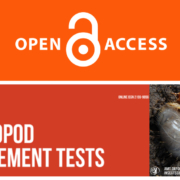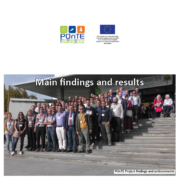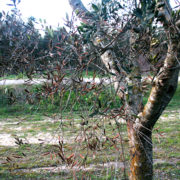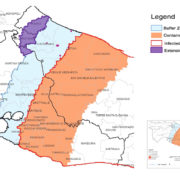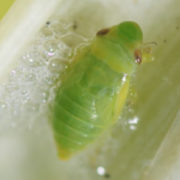Evaluation of efficacy of different insecticides against Philaenus spumarius L., vector of Xylella fastidiosa in olive orchards in Southern Italy, 2015–17
Authors
Crescenza Dongiovanni (1), Giuseppe Altamura (2) Michele Di Carolo (1) Giulio Fumarola (1) Maria Saponari (2) Vincenzo Cavalieri (2)
Affiliations
(1) Centro di Ricerca, Sperimentazione e Formazione in Agricoltura Basile Caramia, Via Cisternino, Locorotondo (Bari), Italy.
(2) CNR – Istituto per la Protezione Sostenibile delle Piante, SS Bari, Via Amendola, Bari, Italy.
Excerpt
Philaenus spumarius L. has been identified as the main vector of Xylella fastidiosa, the bacterium causing a disease denoted as Olive Quick Decline Syndrome (OQDS) in Southern Italy. OQDS epidemics have been decimating olive orchards since 2013 and marks the first establishment and spread of this pathogen in the European territory. A major impediment to contain OQDS spread has been the lack of registered and approved pesticides for the control of P. spumarius on olive. From late 2017 to early 2018, only two commercial formulations of acetamiprid and delthametrin were officially registered in Italy. Hence, an urgent need exists to evaluate field efficacy of chemicals with different active ingredients, formulations, and modes of action to control the meadow spittlebug.
From 2015 to 2017, six different field trials (A, B, C, D, E, and F) were conducted using a randomized block with six replicates per treatment including the untreated check and neonicotinoids as reference products with known efficacy against other Auchenorrhyncha. Each replicate consisted of a single olive branch confined in a net cage where a fixed number of adult spittlebugs (collected by sweeping net) were introduced before and after the insecticide applications.
Applications were performed by spraying the entire canopy, using a water volume of 1,500 liter/ha, except for the treatments with Prev-AM in trial D (Table 4), for which this volume was also increased to 2,000 liter/ha. In addition, in trial F, the formulations containing dimethoate and imidacloprid were applied also by injections in the branches.
Adult spittlebugs were collected by a sweeping net and a fixed number introduced in the cages before and after the insecticide applications.
The efficacy and persistence of each application was determined by scoring spittlebug mortality at 3, 7, 10, and 15 DAT for the trials conducted in 2015, and up to 20 and 25 DAT in trials conducted in 2016 and 2017 (Tables 1–6). Statistical analyses were performed with the CoStat software program ver 6.204. Comparison among numeric data sets was conducted using the one-way ANOVA followed by Duncan’s Multiple Range test. Statistical significance was accepted for P-values ≤ 0.05 α-level (Tables 1–6).
This research was supported in part by industry gifts of pesticides and by the research fundings from the European Union’s Horizon 2020 Research and innovation program under grant agreement no. 635646 “Pest Organisms Threatening Europe POnTE” and grant agreement no. 727987 “Xylella fastidiosa Active Containment Through a multidisciplinary-Oriented Research Strategy XF-ACTORS.”
Published on May, 2018 by ARTHROPOD MANAGEMENT TESTS

